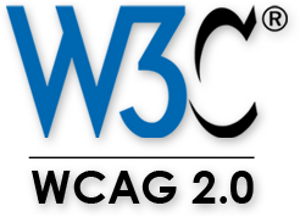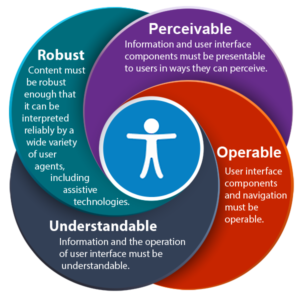 While web accessibility isn’t a new topic, it’s been gaining more recognition and social momentum within the last few years. As a matter of fact, a first of its kind lawsuit was brought against online streaming entertainment giant Netflix by the American Council of the Blind (ACB) back in 2016. In this case, a legal agreement was reached for Netflix to include audio descriptions for many popular titles, helping to provide additional accessibility for the blind. And this trend is continuing to grow.
While web accessibility isn’t a new topic, it’s been gaining more recognition and social momentum within the last few years. As a matter of fact, a first of its kind lawsuit was brought against online streaming entertainment giant Netflix by the American Council of the Blind (ACB) back in 2016. In this case, a legal agreement was reached for Netflix to include audio descriptions for many popular titles, helping to provide additional accessibility for the blind. And this trend is continuing to grow.
In the United States alone, nearly 1 in 5 Americans have some sort of disability. As web technology grows, so do the gaps in accessibility and usability. More and more, individuals are using the web to accomplish everyday tasks, which creates the need for better education and knowledge on the topic. This has also led to a fair amount of legal action within the web industry as well.
Essentially, there are three levels of compliance: 508, ADA and WCAG.
- 508 applies only to federal websites, and has its own set of requirements for usability.
- ADA applies to most US websites, and this level of compliance is enforced by the Department of Justice. This level is often noted as requiring WCAG 2.0 AA compliance. Interestingly enough, this type of compliance is supposed to apply to any business or entity accommodating the public. However, as of 2017, there has been no official ruling on how far this compliance is to be taken. The industry standard at this time is to be as proactive and accommodating as you can for your users. Overall, this leads toward a simpler, easier to use website for all users, improving everyone’s experience.
- And, finally, there’s WCAG compliance, which has three levels: A, AA & AAA. While this particular type of compliance is typically used internationally, it can be a great guide for US compliance as well.
 The main keywords for all types of compliance are perceivable, operable, understandable, and robust, which are all important metrics to keep in mind when you’re making accessibility improvements.
The main keywords for all types of compliance are perceivable, operable, understandable, and robust, which are all important metrics to keep in mind when you’re making accessibility improvements.
Overall, accessibility isn’t always easy. We’re often going back to already existing projects, and working proactively to make them more accessible, usable, operable, and compliant. This includes fallback features for visuals (alt text and attributes), subtitles and audio descriptions for videos, as well as accessibility reviews of external documents (like PDFs). While these types of reviews are useful, in-depth analysis with the help of plug-ins and tools is crucial. When looking at web accessibility, you not only want to make things more accessible, but legal compliance is important for businesses of any size.
For a full breakdown of how to meet WCAG 2.0 compliance, visit this full in-depth guide online. However, if you get there and feel a little lost, we don’t blame you. To help us achieve more accessibility and meet requirements, we use a handful of different tools and plug-ins to test and track changes. If you think about it, web accessibility is never a one and done type of thing. Audits and changes are great, but overall accessibility should also be kept in mind when making additional changes moving forward.
We hope this has been useful and helpful for giving you an introduction on the topic, and providing you with some information to take action on for your own website. Web accessibility is evolving constantly, so staying up to date on the latest news and changes is the biggest key to success. If you have any questions about your own website’s compliance, feel free to contact our MGR Team for a quick review.
Thank you for reading. Until next time, this is Manuel Gil del Real (MGR). And remember short and quick MGR updates, be sure to subscribe to our Podcast at www.MGREdge.com




